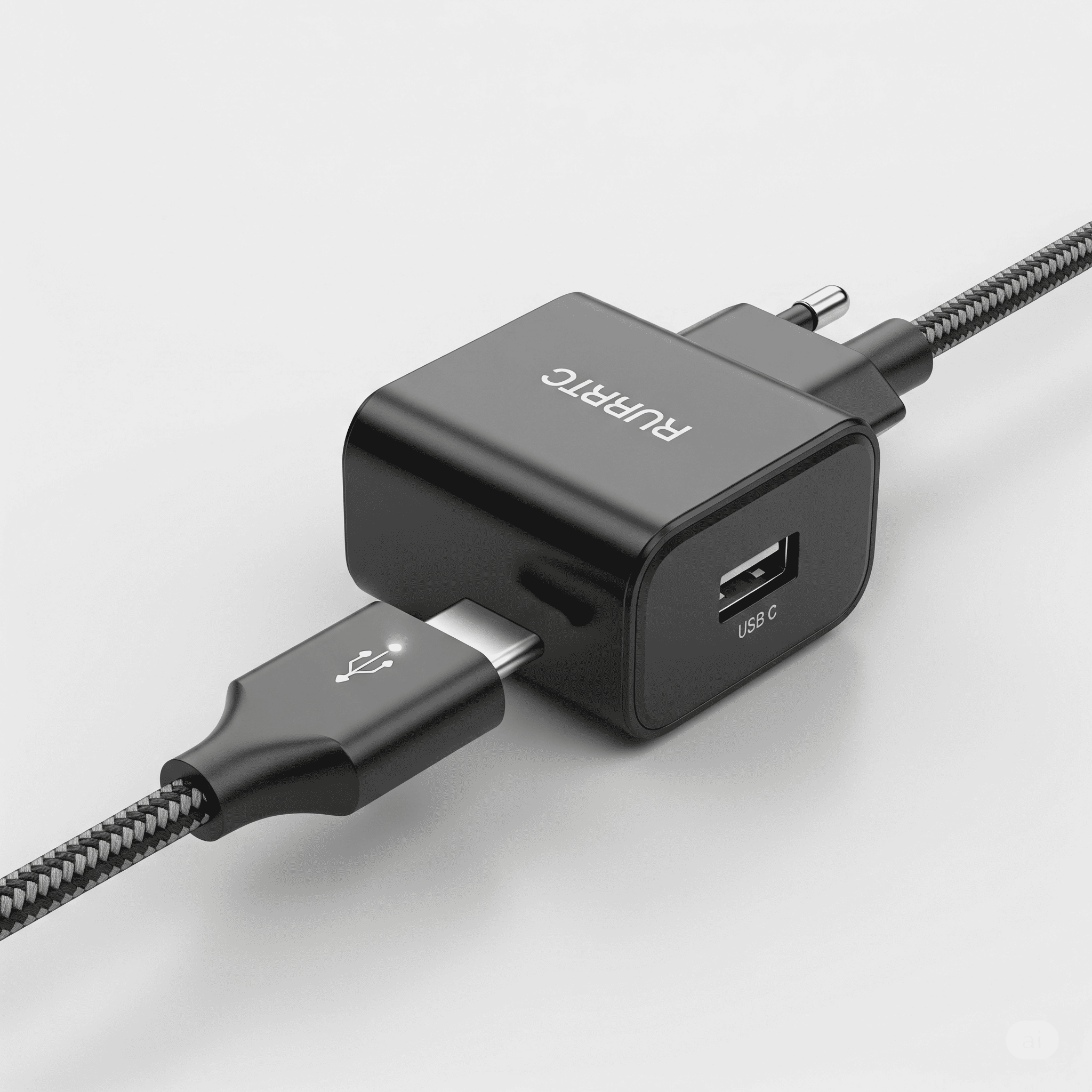Kingsgrove Branch:
USB-C Charger

USB-C charger have become essential in our digital lives. From powering smartphones to fueling laptops, they're everywhere. This guide dives deep into everything you need to know about USB-C chargers, covering their history, features, safety, compatibility, and future trends. We'll explore how to choose the perfect charger for your needs and even touch on the environmental impact of these ubiquitous devices
Understanding USB-C chargers is more than just picking a plug; it's about maximizing your device's performance, ensuring safety, and making informed choices for a sustainable future. Get ready to unlock the full potential of USB-C charging
A Comprehensive Overview of USB-C Charging Technology
USB-C charging has revolutionized how we power our devices. It's a significant upgrade from older standards, offering a more versatile and efficient charging experience
Evolution and Significance
USB-C charging has come a long way. It's a universal standard, replacing the confusing array of ports found in previous generations of devices. This unification simplifies charging, allowing users to use the same cable for various devices. This advantage is especially crucial for portability and ease of use
Technical Specifications and Features
USB-C boasts impressive versatility and compatibility. Its reversible design eliminates the hassle of plugging in cables the wrong way. Furthermore, it supports a wide range of data transfer rates, making it suitable for everything from charging to transferring large files. This adaptability is a key reason for its widespread adoption
Historical Context and Impact
The adoption of USB-C has had a profound impact on several industries. Manufacturers now prioritize a single, universal port, reducing production costs and simplifying supply chains. Consumers benefit from a more streamlined and user-friendly experience
Core Principles of USB-C Charging Protocols
USB-C's power delivery and data transfer capabilities are key to its success. The technology efficiently delivers power to devices, allowing for faster charging times. Data transfer speeds are also significantly improved, enabling users to transfer large files in a fraction of the time
Influence on Portable Electronic Device Design
The adoption of USB-C has spurred innovative device designs. Manufacturers can focus on integrating USB-C ports without worrying about compatibility issues, leading to slimmer and more aesthetically pleasing devices. This emphasis on a unified standard has fostered innovation and design improvements
Comparing USB-C Chargers: A Detailed Analysis
USB-C charger come in various shapes and sizes, each with its own power output and features. Understanding these differences is essential for selecting the right charger for your needs
Types of USB-C Chargers
Different USB-C chargers cater to varying needs. Fast-charging chargers deliver power quickly, while standard chargers offer a more gradual charging process. The wattage of the charger significantly impacts the speed and efficiency of the charging process
Impact of Charger Wattage
Charger wattage directly affects charging speed. Higher wattage chargers provide faster charging times, but this can also impact battery health. Choosing the right wattage for your device ensures optimal charging without compromising battery life
Importance of Choosing the Right Charger
Selecting the correct charger is crucial for optimal performance. Using a charger with insufficient wattage might result in slow charging or even damage to the device's battery. Conversely, using a charger with excessive wattage isn't beneficial either
USB-C Power Delivery (PD), Usb c charger
USB-C Power Delivery (PD) plays a crucial role in optimizing charging performance. It allows chargers to dynamically adjust power delivery to the device, ensuring efficient and safe charging. This intelligent approach improves the overall charging experience
Safety and Reliability in USB-C Charging
Safety is paramount when dealing with electrical devices. Understanding the precautions associated with USB-C charging is essential for preventing potential risks
Safety Precautions and Mechanisms
USB-C chargers incorporate surge protection and over-current mechanisms to safeguard against electrical hazards. Using certified chargers and cables ensures safety and reliable charging
Risks of Counterfeit Chargers
Counterfeit USB-C chargers often lack the safety features of genuine products. Using these chargers poses a risk to your device and your safety. Always purchase from reputable vendors to ensure quality and safety
Cable Quality and Charging Safety
Cable quality directly impacts charging safety. Using a damaged or low-quality cable can lead to electrical hazards and device malfunctions. Invest in high-quality cables for reliable and safe charging
Safety Certifications and Standards
Ensures compliance with EU safety standards
Ensures compliance with US safety and electromagnetic interference standards
Validates the charger's safety and quality in the US
| Standard | |
|---|---|
| European Union | |
| Federal Communications Commission (USA) | |
| Underwriters Laboratories |
Troubleshooting Charging Issues
Troubleshooting charging issues involves a systematic approach. Checking the cables, ports, and device settings can help identify the problem. If issues persist, consult the manufacturer's support documentation
USB-C Charger Compatibility Across Devices: Usb C Charger
Compatibility is a critical factor when using USB-C chargers. Understanding device-specific requirements is essential for reliable charging
Compatibility Issues and Challenges
Different devices have unique charging requirements. Compatibility issues can arise if the charger's output doesn't match the device's specifications
Device-Specific Charging Requirements
Devices often have specific charging protocols and power delivery needs. Using a charger that doesn't meet these requirements can lead to slow charging or damage to the device
Charging Capabilities of Different Devices
Different devices, such as smartphones, laptops, and tablets, have different charging needs. Understanding these differences helps in selecting the appropriate charger
Impact of USB-C Ports and Configurations
Different USB-C ports and configurations might have varying compatibility issues. It's crucial to understand the device's specific port type to ensure compatibility
Last Point
In conclusion, USB-C chargers have revolutionized how we power our devices, offering a blend of speed, versatility, and safety. From understanding the different types to choosing the right one for your needs, this guide has provided a comprehensive overview. We've covered the essential aspects of USB-C charging, from its historical context to its future innovations. Remember to prioritize safety, consider compatibility, and choose environmentally conscious options
Now you're equipped to navigate the world of USB-C charging with confidence!
Question Bank
What are the common charging issues with USB-C chargers?
Slow charging, overheating, or no charging at all can stem from several issues. Check the cable for damage, ensure the port is clean, and try a different USB-C port on your device. If the problem persists, consider the charger's wattage and compatibility with your device
How do I choose the right USB-C charger for my phone?
Look for a charger that matches the wattage recommended by your phone's manufacturer. Higher wattage typically leads to faster charging. Consider the cable's quality, as a poor cable can hinder the charging process. Always prioritize safety certifications
Are USB-C chargers safe?
Yes, modern USB-C chargers are generally safe, but always prioritize reputable brands and check for safety certifications. Using counterfeit or low-quality chargers can pose risks. Pay attention to cable quality and surge protection
What are the environmental impacts of USB-C chargers?
Like any electronic device, USB-C chargers have an environmental footprint. Choose chargers made from sustainable materials, and recycle or dispose of them responsibly when they're no longer needed
Recent posts

Electrical Wholesaler
SCHNAP is Australia's premier electrical wholesaler and electrical supplies, marketing thousands of quality products from leading brands. Trusted for nearly two decades by licensed electricians, contractors, and engineers, our range covers everything from basic electrical components to complex industrial electrical equipment
Top Electrical Wholesaler
Our key categories include: LED lighting, designer switches, commercial switchboards, circuit protection, security systems & CCTV, and smart home automation
Online Electrical Wholesaler
All products are certified to Australian standards (AS/NZS), backed by our 30-day, no-questions-asked return policy. Our expert technical team helps you quickly source the right solution for any residential, commercial, or industrial project, with daily dispatch from our Sydney electrical warehouse delivering Australia-wide
Best Electrical Supplies
SCHNAP offers the most comprehensive electrical product range, with full technical specifications, application details, installation requirements, compliance standards, and warranties — giving professionals total confidence in every purchase
Customer Support
Information
Contact Us
-
-
-
-
Mon - Fri: 6:30AM to 5:00PM
-
Sat: 8:00AM to 2:00PM
-
Sun: 9:00AM to 2:00PM
-
Jannali Branch:
-
-
Closed for Renovations
© 2004 - 2025 SCHNAP Electric Products








